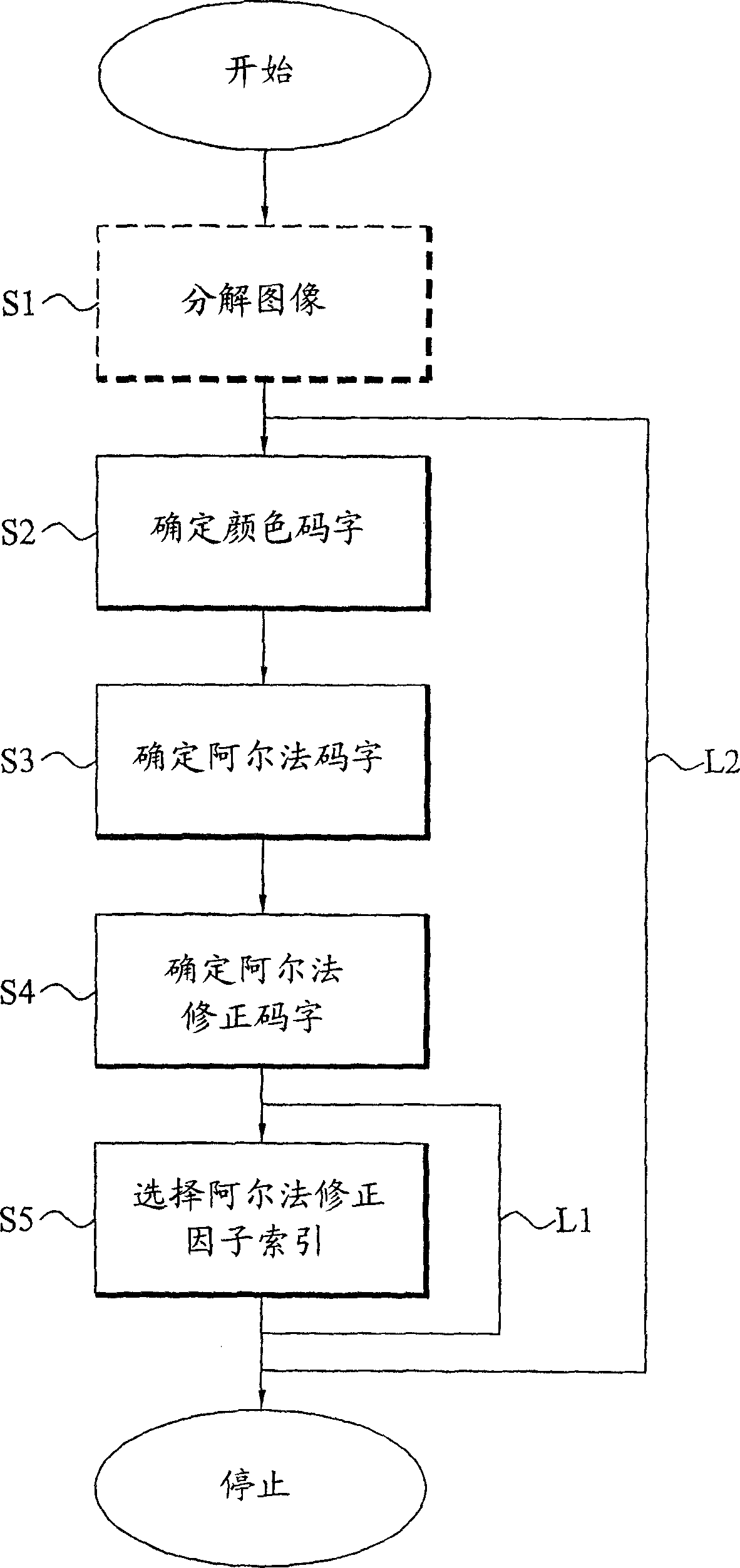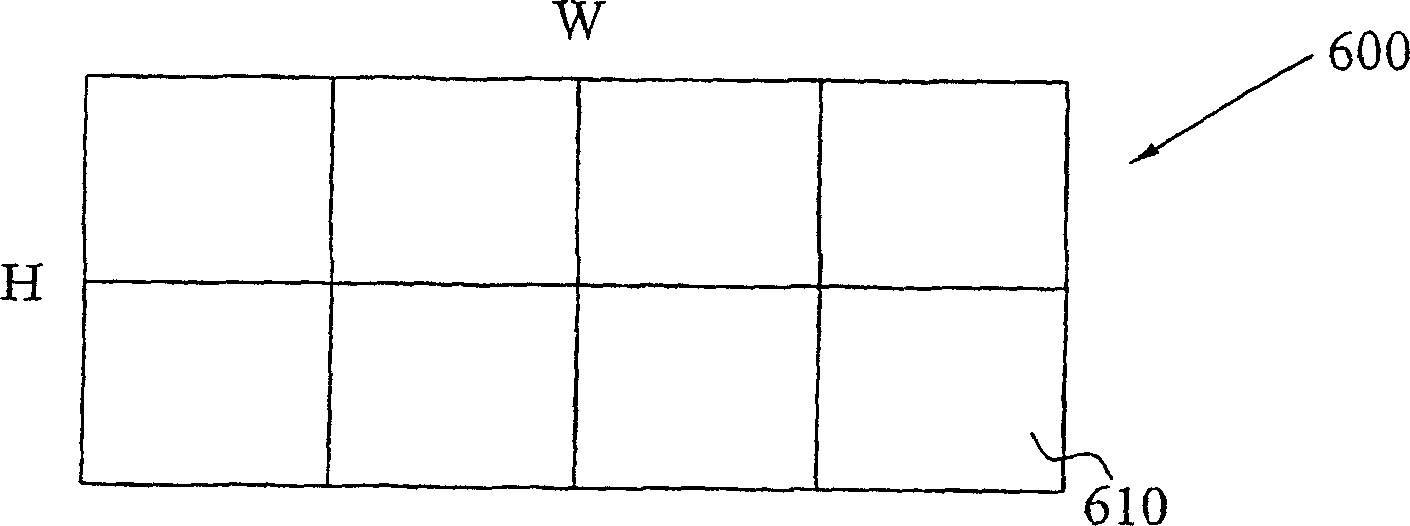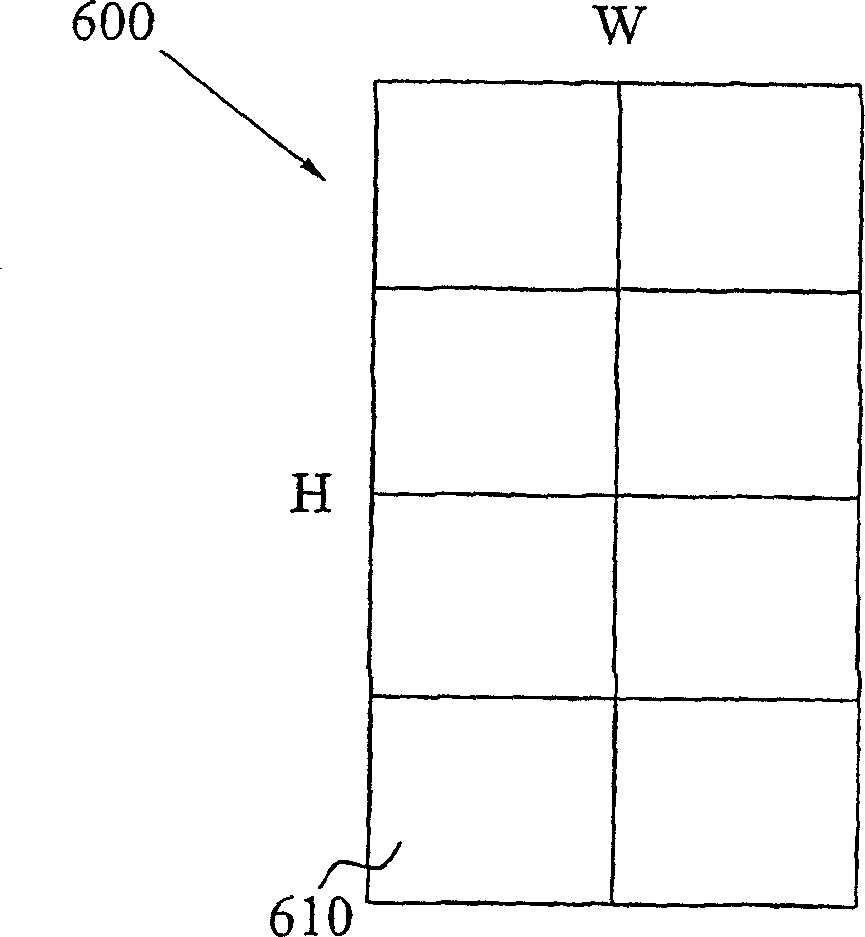Multi-mode image processing
A technology of alpha and alpha value, which is applied in the field of encoding and decoding images, can solve the problem of not being able to deal with alpha, and achieve the effect of simple hardware implementation
- Summary
- Abstract
- Description
- Claims
- Application Information
AI Technical Summary
Problems solved by technology
Method used
Image
Examples
Embodiment Construction
[0057] Throughout the drawings, the same reference characters are used for corresponding or identical parts.
[0058] The present invention relates to image and graphics processing, and in particular to encoding or compressing alpha images and decoding or decompressing encoded (compressed) alpha images.
[0059] Generally, according to the invention, during image encoding, an alpha image is decomposed or partitioned into a plurality of image blocks. Each such image block then contains a plurality, ie at least two image elements, which have image element-related properties, in particular a certain color and an associated alpha or transparency value. The image blocks are then encoded or compressed to generate an encoded representation of the image.
[0060] When the encoded image is to be displayed on the screen, or when geometric primitives associated with the encoded image are to be rendered, the relevant image elements of the encoded image block are identified and decoded. ...
PUM
 Login to View More
Login to View More Abstract
Description
Claims
Application Information
 Login to View More
Login to View More - R&D
- Intellectual Property
- Life Sciences
- Materials
- Tech Scout
- Unparalleled Data Quality
- Higher Quality Content
- 60% Fewer Hallucinations
Browse by: Latest US Patents, China's latest patents, Technical Efficacy Thesaurus, Application Domain, Technology Topic, Popular Technical Reports.
© 2025 PatSnap. All rights reserved.Legal|Privacy policy|Modern Slavery Act Transparency Statement|Sitemap|About US| Contact US: help@patsnap.com



